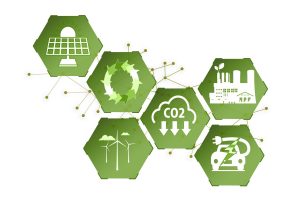As cities grow, they have to make tough decisions in the development of infrastructure & economy while dealing with the environmental problems. This article thus looks at the different problems and new ideas that affect making cities more sustainable. It highlights the issues like unequal access to infrastructure and the move towards renewable energy and smart cities. It stresses the importance of a complete approach to city planning as compared to solely relying on technology to solve everything.
Socioeconomic Disparities:
The World Bank survey reveals that, more than half of the world’s population live in cities, and this is expected to rise. But as cities grow, they often leave some people behind, especially in poorer countries. In these places, slum dwellers may not get basic things like clean water and toilets, keeping them trapped in poverty. Richer people can safeguard their water and power needs, but poor people cannot. When municipalities don’t make enough money, this gap gets worse, showing the need for fair policies that focus on helping everyone and making cities stronger.
Transition to Renewable Energy:
- IRENA says that 2/3rd of the new electricity made in 2019 came from renewable sources like the sun and wind.
This shows that more people are realizing the benefits of clean energy, like creating jobs and cutting pollution. Iceland is a good example, which gets all its power from sources like hot springs and rivers. With climate change getting worse, it’s important to use less fossil fuels like coal and switch to cleaner options.
Use of Digital Technology:
In the era of digital revolution, cities are working on the technology to address the various challenges of sustainable urbanization. Smart city initiatives emphasize on enhancing quality of life for residents, rather than simply increasing the efficiency of service delivery. By using the power of digital technology, cities can foster greater inclusivity, resilience, and sustainability for all inhabitants, e.g. Singapore uses sensors and data analysis to improve transportation. These technologies not only upgrade infrastructure but also help government make decisions using data and involve citizens more effectively, making city management more responsive and inclusive.
Role of Civil Society:
Civil society is very important for making cities sustainable. They go beyond just speaking up and instead come up with new ideas and help meet social needs. By promoting sustainable practices and services, these groups are crucial in tackling the many problems cities face. But when they become too focused on making money, it creates problems. So, it’s important to keep their focus on their original mission.
Ancient Wisdom:
In our efforts to create sustainable cities, it’s valuable to look back at how ancient civilizations built and lived in harmony with nature. For example, Indian architecture has many old techniques that are eco-friendly. We can learn from these ancient methods and blend them with new ideas to make buildings that respect the environment and local culture. By combining old and new approaches, architects and city planners can create strong, culturally sensitive buildings that care for the environment. Some of the creative ways to promote sustainability are Transit-oriented development (TOD), community-based planning, complete streets etc.
Therefor, as cities grow and change, it’s really important to make them eco-friendly. We can do this by fixing unfairness, using renewable energy, reusing things wisely, using technology, learning from the past, and letting people have a say. If we work together and have good leaders, we can make sustainable urban environments that last and do well for a long time.
It’s time to shift from being consumers to being caretakers. We have the power to shape a sustainable world through our choices.
Mari Copeny
Written by: Gauttam Shah | Edited by: Nandni Ranpara



